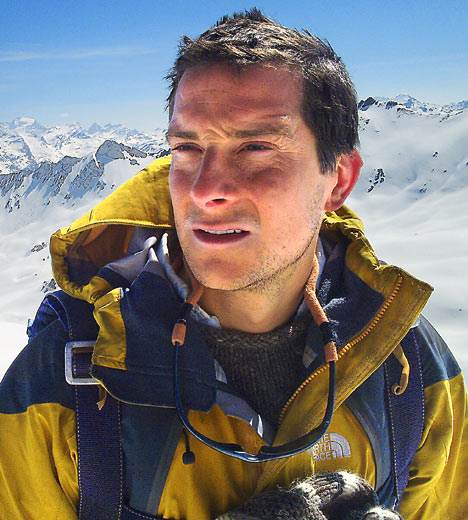Bear Grylls & Bowen Technique

Yet despite appearances, Bear has been plagued with back pain for over ten years – for which he only recently found an effective treatment.
Twelve years ago, aged 21, he broke his back when training with the SAS after his parachute failed to inflate at 16,000 feet.
“I should have cut the main parachute and gone to the reserve but thought there was time to resolve the problem.” He landed on his parachute pack, which was like an iron bar, and fractured three vertebrae.
It was extraordinary that he was alive, let alone not paralysed – but incredibly the spinal cord, which channels messages between the brain and all parts of the body, had not been severed.
Bear was treated at Headley Court, the defence forces’ rehabilitation centre in Surrey.
“The doctor said I was a miracle man. I had come so close to severing my spinal cord. Because of my age and my fitness, they decided I could avoid surgery.”
Instead, he underwent ten hours a day of physiotherapy, swimming, stretching and ultrasound treatment – a programme designed to help servicemen get back to active duty, but rarely available to civilians.


‘I had nightmares for months. Still, I was lucky to walk away without surgery – but ever since, I have suffered twinges and pains.”
Deep massage helped, but he says he always felt physically ‘unbalanced’ by his injury.
Then a year ago his wife suggested he see a Bowen therapist. The Bowen Technique, developed in the 1950s, involves using rolling movements over muscles, ligaments and tendons.
This is said to send impulses to the brain to trigger the body’s own healing system.
Precisely how it works is a mystery, but many professional football clubs maintain a Bowen therapist as it has been shown to be very effective in realigning the skeletal structure.
“I was sceptical, but wanted to keep an open mind,” says Bear.
He went to see East Sussex based Bowen Therapist Sarah Yearsley.
“With the slightest squiggle of her fingers, it felt like petrol was being put back in my tank and I could feel all the stress seeping away. More importantly, after my back accident, my spine and pelvis had lost alignment, so I felt unbalanced.”
Sarah explained that Bear’s pelvis was slightly twisted – and that this would cause endless problems and backache.
Most fans of Bear’s Born Survivor series will not have noticed anything wrong, yet a subtle misalignment – visible only to the expert eye – can impact on total health For Bear, who is often jumping out of planes, having complete structural alignment is even more important than for the average person.
It has helped him prepare for his most perilous challenge yet. Next month he is attempting a powered paraglide over Everest’s 29,035ft summit.
“I am scared I could blackout in the click of a finger.” If this venture seems inconsistent with his desire to lead a healthy life, Bear has an announcement.
“This is the last of my big expeditions or challenges. They’re getting too dangerous. I’m not on the Ranulph Fiennes road of trying to beat the last expedition.” Sir Ranulph has been an inspiration to Bear all his life.
As a boy, Bear climbed the bell tower at Eton, where the baronet had also once been a pupil. “In the lead lining, I found the initials RF. I put BG next to his,” he recalls.
But while he is ‘full of dreams and ambitions,’ he also has a family and a long-suffering wife at home.
In fact, relaxation is vital to Bear, who says, somewhat surprisingly: “I don’t thrive on stress. I love lying on the deck on our houseboat reading a book.
“I’m terrified of walking into a room full of people. Sitting down at a dinner table with 15 strangers brings me out in a sweat.” Yet, he says, fear isn’t the reason not to do something.
“I’m scared of heights, yet I’ve just abseiled 770 feet off Canary Wharf for charity.
“But the folly of youth is that you think you’re immortal. Losing my father and having my children has brought me to my senses. I want to be around to love and guide my sons for a long time.
